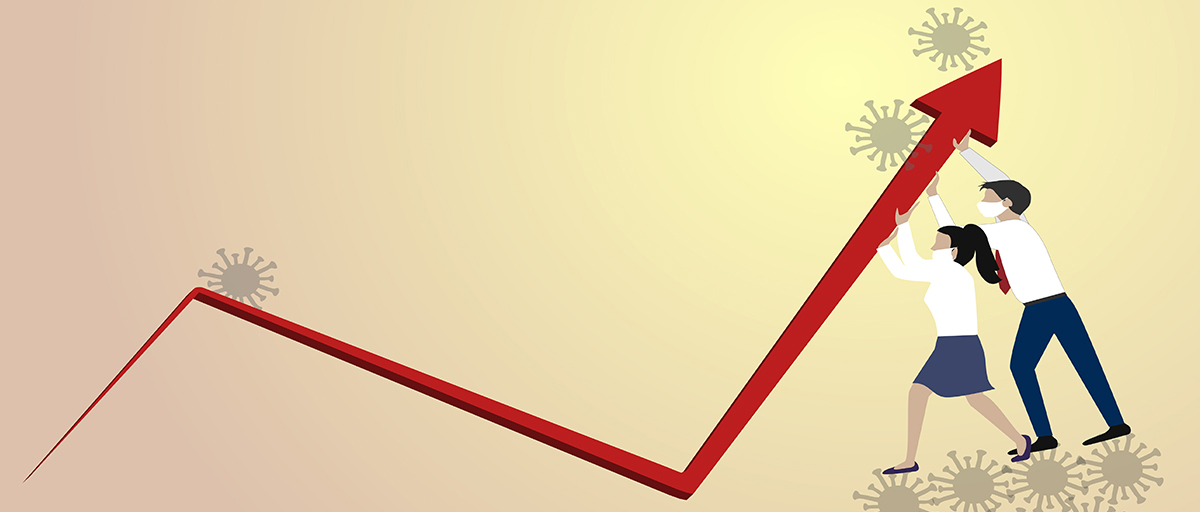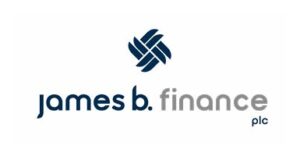“The new normal” has become part of our lexicon this year, in all areas of life.
Will it become “normal” to wear masks during flu season? Will companies determine that workers are just as productive from home and fully embrace remote work? Will consumers permanently close the door on shopping at brick-and-mortar stores in favour of ordering groceries and supplies online?
To investigate the means through which these shifts could happen—and the likelihood that they will—we identified three main ways the coronavirus could shape the economy long after the pandemic has subsided:
- Habits could evolve, causing lasting change in consumer behaviour. As an example of the impact of habits, consider the rise of recycling in the United States over the past several decades. This shift was due in part to the advent of Earth Day in 1970 and the nationwide campaign encouraging Americans to “reduce, reuse, recycle.” The Environmental Protection Agency reported that 34.7% of municipal solid waste was recycled in 2015, as compared with 6.6% in 1970.
- Fear can make consumers reluctant to engage in certain activities—in this case, fear of the next pandemic (including a COVID-19 resurgence). An instance where fear led to consumer shifts is when research in the 1960s demonstrated the health risks of smoking cigarettes. This led to a permanent reduction in cigarette sales—approximately 42% of U.S. adults smoked in 1964, compared with approximately 19% in 2011.
- Sunk costs, or costs that have already been incurred and cannot be recouped, could change the long-term plans of consumers and firms. A classic example of sunk costs is the Concorde. British and French manufacturers poured such exorbitant sums into developing the aircraft in the 1950s and 1960s that the jet never became profitable over the decades it was commercially available. (This was such a notorious incident that the sunk-cost fallacy is sometimes also referred to as the Concorde fallacy.)
We explored these three avenues to try to understand what the world could be like after COVID-19. To get a sense of how they’ve taken shape in the past, and what this could mean for the present moment, we considered five historical events that we believe are comparable to the COVID-19 pandemic:
- World War II and rationing
- World War II and female labour force participation
- The oil price shock of the 1970s
- 9/11 and air travel
- Pandemics of recent history
We analysed the overall impact of each of these events on long-term economic behaviour, and gauged whether habits, fear, and sunk costs fundamentally changed the way people and businesses acted in their aftermath.
What Plays the Biggest Role in Changing Consumer Behaviour?
There are three key themes that we think could affect the post-pandemic world:
1) the increase in working from home;
2) the future of industries that were severely hit by social distancing concerns during the pandemic, such as dine-in restaurants, air travel, hospitality, and large events; and
3) increased adoption of e-commerce and other digital services.
The exhibit below maps out how we think each of these themes will be influenced by habits, fear, and sunk costs.

Habits have evolved during the COVID-19 pandemic as a result of social distancing concerns, as many people have cut back on normal activities such as eating at restaurants, traveling by air, attending large events, and shopping at physical stores.
Will this short-term shift in habits lead to long-term changes in consumer behavior? Companies and industries impacted by this reduction in demand are underperforming in the market, implying that investors think it will.
Many of the industries shaped by changes in habits are the same ones that could be impacted by fear of the next pandemic or a COVID-19 resurgence. It’s difficult to predict how this fear will shape consumer behaviour—especially once an effective vaccine is developed and distributed—but awareness around the possibility of another pandemic may linger in people’s minds. While the odds that anyone will continue to avoid eating in a restaurant because of that risk seem low, it’s possible that fear may remain around the largest and densest kinds of social gatherings (such as public transit or air travel).
There’s also the matter of sunk costs, which are probably the least intuitive and least discussed of the three concepts. Essentially, the pandemic has forced consumers and firms to incur costs they otherwise would not have; for instance, purchasing home office equipment to facilitate remote working. Once the pandemic is over, the impetus for the purchase decision will have disappeared, but people will still have the home office equipment, so working from home will continue to be marginally more attractive.
Sunk costs can also come in other, nonmonetary forms, like time. Consider that the surge in working from home has required extensive time on the part of managers, as they’ve needed to craft work-from-home capabilities, such as drawing up policies and learning the best ways to communicate with remote workers. This may not have been considered a valuable use of their time before the pandemic, but now that firms have been forced to incur this cost, the issue is no longer relevant, and the necessary work-from-home systems are in place.
Similarly, consumers also have limited amounts of time. When people turned to shopping online instead of at brick-and-mortar stores because of social distancing, previously reluctant consumers acclimated themselves to e-commerce out of necessity. Now that they’ve gotten more comfortable with shopping online, they might continue to do so out of convenience long after the pandemic.
How Do Extreme Shocks Drive Long-Term Economic Behaviour?
To better understand how the world might look different after COVID-19, we used these three concepts in our analysis of the five analogous historical episodes that had a significant short-term impact on consumer behaviour.
The exhibit below maps out the degree to which each of these episodes led to fundamental long-term changes in economic behaviour, based on these three means.

Altogether, our analysis of these historical episodes indicates that there’s, at best, modest support for the idea that COVID-19 will affect long-term consumer habits.
Each of these shocks had some impact on short-term consumer behaviour, but more often than not, habits eventually reverted to more closely resemble previous behaviours and fear subsided sooner or later. Though each episode was unique, we note that sunk costs were the means through which a longer-term impact most frequently occurred.
The Economic Impact of Food Rationing During World War II
Residents of the United Kingdom were subject to rationing of some combination of petrol, meat, fish, cheese, and more between 1939 and 1954. The island nation imports approximately 70% of its food and was therefore exposed to massive supply-chain disruption as a result of World War II. The rationing continued after the war as the U.K. redistributed food and resources to war-devastated countries under British control.
Did this period of deprivation have a lasting impact on consumer behaviour? The fact that it lasted for so long makes the possibility of permanent change seem more likely.
The exhibit below shows the sharp negative impact that rationing had on the demand for key food items. At their respective troughs, per capita meat consumption declined as much as 32%, fat (butter, margarine, and others) 21%, sugar 35%, and eggs 64%.

However, Britons clearly didn’t get accustomed to these austere eating habits. Food consumption rebounded in the early 1950s as rationing was relaxed, and by the mid-1950s, consumption of meat, fat, sugar, and eggs was far in excess of pre-war levels.
Therefore, wartime rationing didn’t have a noticeable long-term economic impact; in general, our analysis shows that demand for rationed goods fully recovered after the war.
Did World War II Advance the Rise of Women in the Workforce?
Also during World War II, the number of men off at war and wartime production needs led to a spike in the number of women working outside the home. These catalysts didn’t last—the men came home, and those elevated wartime production levels died down—but did this episode play a role in the continued rise of women in the workforce?
Habit may have played a role in this shift as both women and their families became more accustomed to their working. Sunk costs also had some importance as firms needed to experiment with employing more women—and, by all accounts, this experiment was successful in terms of productivity.
But overall, we believe the movement toward greater female labour force participation during the war had only a modest impact on the long-term trend. The fact is that female labour participation in the U.S. was already on the rise, and the 1940s hardly stand out in terms of the trend’s longer-term adoption.
The exhibit below shows that the increase during the 1940s tracks with that of other decades—about 6 percentage points, right in line with the average decade from 1930 to 1990.

One could argue that the fast growth in the decades after the 1940s was jump-started by the war, but we think other factors were more important. For instance, economists have proposed the importance of:
- increasing demand for service-sector and office jobs,
- changes in household production technology,
- removal of barriers to employment for married women,
- progress in maternity care (which reduced birth-related mortality and disability),
- the rise of feminism,
- the invention of contraception pills (which enabled women to plan careers and family life more reliably),
- an increase in education levels among women, and
- wage convergence.
It’s worth noting that for all the gains women have made in workforce participation over the decades, COVID-19 could threaten these advancements, at least in the short term.
Research by McKinsey has indicated that women’s jobs have been 1.8 times more vulnerable than men’s jobs during the pandemic: Although women make up 39% of the global workforce, they account for 54% of overall job losses. This disparity may be because this recession has most affected the industries where female labour is concentrated, such as restaurants, healthcare, and hospitality, and because school and day-care closures have increased childcare needs.
Working women with children are especially vulnerable. According to a survey by the Boston Consulting Group, working women spend on average 15 hours per week more on unpaid domestic labor than do working men. As needs for at-home childcare and other home responsibilities increase, women might be more likely than men to give up their jobs because they tend to have lower salaries and earning expectations.
What the Oil Price Shock of the 1970s Meant for Consumer Behaviour
These themes also surfaced during the oil price shock of the 1970s, when oil prices averaged $63 a barrel—250% higher than the average from the decade prior—because of a series of supply-side shocks. Unsurprisingly, these severe price increases led to a major drop in consumer demand: Demand growth averaged 0.5% between 1974 and 1985, compared with 7.0% growth between 1940 and 1973.
Oil prices began declining again in 1986 (averaging $32 a barrel from 1986 to 2000), but the exhibit below shows that consumer demand never “caught up” to its pre-1974 average after the price shocks. Rather, oil demand grew merely 1.7% from 1986 to 2000.

So, why did demand remain depressed—and why didn’t fuel efficiency levels revert—when oil prices returned to a more affordable level?
Because during the price shocks, the automotive industry had invested in fuel-efficient vehicles in order to make it possible for people to continue to travel at the same rate. And the sunk costs incurred as part of this effort meant that people never fully reverted to driving less-efficient vehicles.
These sunk costs took shape in two main ways:
- Political sunk costs. Fuel standards weren’t relaxed when oil prices fell. This owed to both governmental inertia and budding concerns about climate change. Enacting powerful legislation requires a large amount of time, effort, and deal-making. Once politicians had already incurred the costs of developing fuel-efficient cars, rolling back standards wasn’t a worthy use of time and resources.
- Monetary sunk costs. Many of the technologies involved in boosting fuel efficiency, such as research-and-development and manufacturing capabilities, were essentially sunk costs. Continued progress in these areas even allowed average fuel efficiency to hold steady in the 1990s and 2000s as consumers switched to buying heavier vehicles such as SUVs and trucks.
Therefore, we believe that the oil shock did indeed have a permanent economic impact with regard to demand for fuel consumption.
Did 9/11 Permanently Depress Air Travel?
The state of U.S. air travel after Sept. 11, 2001, also has clear similarities to the current situation.
Just as fear of COVID-19 has driven recent short-term decreases in demand for air travel and other high-density activities, consumers’ fear of terrorist attacks after 9/11 led to a significant decline in air travel for several years. According to a Gallup survey conducted immediately after 9/11, 43% of Americans said they were less willing to fly on airplanes because of the attacks. This number remained at about 30% throughout 2002.
Additionally, this fear of air travel after 9/11 may have brought about a permanent change in consumer habits.
The exhibit below shows the significant short-term impact of 9/11 on U.S. air travel. Industry revenue passenger miles (the standard way of gauging airline industry volume) and the number of passengers lagged real gross domestic product in the years after 9/11.

However, the exhibit also shows that the short-run economic impact of 9/11 started to dissipate in 2004. Revenue passenger miles began catching up to GDP and, by the later 2010s, the ratio of air travel to GDP had even surpassed pre-9/11 levels. At least at the big-picture level, 9/11 had a marginal long-term impact on air travel, despite the substantial shock in the short run.
We did identify one larger long-term economic impact of 9/11 on air travel: business travel. We think that as business customers were forced to cancel work trips in the immediate aftermath of 9/11, they realized that the telephone and newer communications technologies like email were effective substitutes for these trips. This caused a structural shift in the market and allowed more leisure-focused low-cost carriers to take on greater market share. It also forced legacy carriers to retreat to international travel, which is more structurally protected from low-cost competition.
How applicable are these lessons to understanding the post-COVID-19 world? Again, the big picture is that air travel post-9/11 mostly recovered in aggregate, even after being depressed for a multiyear period. Short-haul business travel did appear to be permanently affected, but it’s possible that this trend would’ve played out either way with the advent of new communications technologies.
For that reason, we think 9/11 had at most a modest impact on long-term air travel. The fear initially created by the attacks did depress consumer demand for air travel in the short run, but this effect eventually faded.
The Economic Impact—or Lack Thereof—From Other Pandemics
Finally, we examined the history of recent pandemics for lessons on COVID-19’s potential impact on economic behaviour.
The most severe pandemic in recent history was the Spanish flu of 1918-20, which resulted in at least 50 million deaths across the globe. This pandemic caused massive short-term disruptions to society, and familiar social distancing measures—face mask mandates, school and theatre closures, and cancelled public gatherings—were enacted in order to contain the virus. While some studies have concluded that social trust deteriorated as a result of the Spanish flu, it’s difficult to reach any concrete conclusions about its economic impact, since it occurred roughly concurrently with World War I.
As for other 21st century pandemics (like SARS, H7N9, and H1N1), these episodes had nowhere near the short-term impact of COVID-19, though they may have contributed to a few minor changes. For instance, SARS led to the widespread acceptance of face masks in China and Hong Kong and may have played a supporting role in China’s e-commerce adoption.
Lessons Learned About Potential Changes to Economic Behaviour
There is considerable debate about what we can expect for the long-term economic impact of COVID-19. Perhaps the pandemic will dramatically accelerate ongoing shifts in the economy (such as the shift from brick-and-mortar retail to e-commerce), or perhaps it will create new trends entirely (such as permanent shifts away from dine-in restaurants or air travel). Equity markets are implying a major reshaping of the U.S. economy compared with how it looked before the pandemic.
While we believe that the long-term economic calculus of consumers and firms may be impacted by shifting consumer habits, lingering fear, and sunk costs incurred, our analysis of five similar historical episodes suggests that these resulting changes will be modest at best. Our analysis indicates that consumer habits eventually revert, and fear eventually dissipates. It’s sunk costs that have the largest—yet still a modest—impact on long-term consumer behaviours.
Morningstar Disclaimers:
Since its original publication, this piece may have been edited to reflect the regulatory requirements of regions outside of the country it was originally published in.
The opinions, information, data, and analyses presented herein do not constitute investment advice; are provided as of the date written; and are subject to change without notice. Every effort has been made to ensure the accuracy of the information provided, but Morningstar makes no warranty, express or implied regarding such information. The information presented herein will be deemed to be superseded by any subsequent versions of this document. Except as otherwise required by law, Morningstar, Inc or its subsidiaries shall not be responsible for any trading decisions, damages or losses resulting from, or related to, the information, data, analyses or opinions or their use. Past performance is not a guide to future returns. The value of investments may go down as well as up and an investor may not get back the amount invested. Reference to any specific security is not a recommendation to buy or sell that security. It is important to note that investments in securities involve risk, including as a result of market and general economic conditions, and will not always be profitable. Indexes are unmanaged and not available for direct investment.
This commentary may contain certain forward-looking statements. We use words such as “expects”, “anticipates”, “believes”, “estimates”, “forecasts”, and similar expressions to identify forward-looking statements. Such forward-looking statements involve known and unknown risks, uncertainties and other factors which may cause the actual results to differ materially and/or substantially from any future results, performance or achievements expressed or implied by those projected in the forward-looking statements for any reason.
The Report and its contents are not directed to, or intended for distribution to or use by, any person or entity who is a citizen or resident of or located in any locality, state, country or other jurisdiction where such distribution, publication, availability or use would be contrary to law or regulation or which would subject Morningstar or its subsidiaries or affiliates to any registration or licensing requirements in such jurisdiction.
MeDirect Disclaimers:
This information has been accurately reproduced, as received from Morningstar, Inc. No information has been omitted which would render the reproduced information inaccurate or misleading. This information is being distributed by MeDirect Bank (Malta) plc to its customers. The information contained in this document is for general information purposes only and is not intended to provide legal or other professional advice nor does it commit MeDirect Bank (Malta) plc to any obligation whatsoever. The information available in this document is not intended to be a suggestion, recommendation or
solicitation to buy, hold or sell, any securities and is not guaranteed as to accuracy or completeness.
The financial instruments discussed in the document may not be suitable for all investors and investors must make their own informed decisions and seek their own advice regarding the appropriateness of investing in financial instruments or implementing strategies discussed herein.
If you invest in this product you may lose some or all of the money you invest. The value of your investment may go down as well as up. A commission or sales fee may be charged at the time of the initial purchase for an investment and may be deducted from the invested amount therefore lowering the size of your investment. Any income you get from this investment may go down as well as up. This product may be affected by changes in currency exchange rate movements thereby affecting your
investment return therefrom. Any decision to invest should always be based upon the details
contained in the Prospectus and Key Investor Information Document (KIID), which may be obtained from MeDirect Bank (Malta)
plc.





